Choosing the right notebook can greatly enhance your writing experience, especially if you’re a fountain pen enthusiast or someone who treasures well-crafted stationery for daily use. This guide will take you through some of the top notebook options available, ensuring they meet the specific needs of fountain pen users, such as smooth paper quality, resistance to ink bleed-through, and exceptional durability. Alongside these recommendations, we’ll also explore versatile notebooks perfect for everyday writing, balancing functionality with aesthetic appeal. Whether you’re journaling, sketching, or taking notes, this post will help you find the ideal notebook to complement your writing habits and tools.
What are the top notebooks for fountain pen enthusiasts?
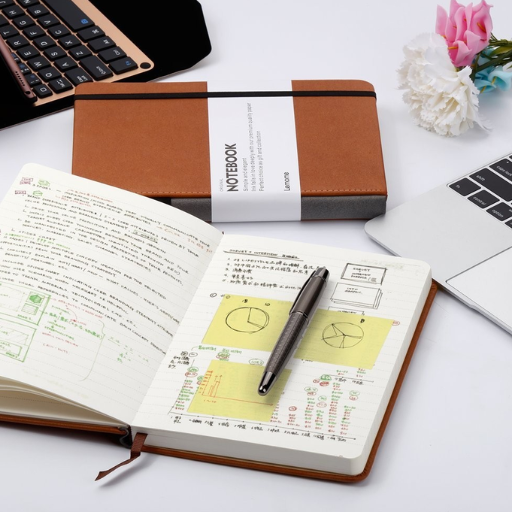
Rhodia Notebooks
Renowned for their ultra-smooth, acid-free, and fountain pen-friendly paper, Rhodia notebooks are a top choice among enthusiasts. They offer excellent resistance to feathering and bleed-through, making writing a seamless experience.
Leuchtturm1917
Known for their premium quality and variety of styles, Leuchtturm1917 notebooks feature ink-proof paper that works beautifully with fountain pens. Their organizational features, such as numbered pages and an index, also add great functionality.
Clairefontaine Notebooks
With exceptionally smooth, 90gsm paper, Clairefontaine notebooks are perfect for fountain pen users. They provide crisp, clean writing without ghosting or bleeding, ideal for effortless note-taking or journaling.
Tomoe River Paper Notebooks
Famous for their thin yet luxurious paper, Tomoe River ensures vibrant ink shading and minimal ghosting. These lightweight notebooks are highly prized by fountain pen aficionados for showcasing ink qualities like sheen and shading.
Midori MD Notebooks
Minimalist yet functional, Midori MD notebooks are crafted with fountain pens in mind. Their high-quality paper allows for smooth gliding of the nib while preventing smudges and bleed-through.
Each of these notebooks balances functionality, aesthetic design, and compatibility with fountain pens, providing an exceptional writing experience.
Which notebooks offer the best paper quality for fountain pens?
Rhodia Notebooks
Rhodia is renowned for its smooth, high-quality vellum paper, which pairs excellently with fountain pens. The paper resists feathering and bleed-through while showcasing ink properties like shading and sheen beautifully.
Tomoe River Paper
Highly praised within the fountain pen community, Tomoe River paper is ultra-thin yet exceptionally smooth, allowing for vibrant ink expression. It minimizes bleed-through while offering a unique writing experience that highlights ink qualities.
Leuchtturm1917 Notebooks
Leuchtturm1917 notebooks strike a balance with their durable paper, which performs well with most fountain pens. While slightly thicker than Tomoe River, it provides minimal feathering and bleed-through, offering a reliable choice for everyday writing.
Each of these notebooks excels in different aspects, ensuring that fountain pen enthusiasts can find a paper type that suits their specific preferences and needs.
How does paper weight affect fountain pen writing experience?
Paper weight plays a significant role in influencing the fountain pen writing experience, as it determines how ink interacts with the surface. Heavier paper, typically measured in grams per square meter, tends to handle fountain pen ink better due to its thickness and density, reducing issues like bleed-through and wrinkling. Lighter paper, while thinner and more portable, often struggles with ink absorption, leading to feathering and loss of detail in the writing. Additionally, paper weight can impact drying times; thicker paper may slow ink absorption, allowing for more vibrant strokes but requiring longer to dry. Choosing the right paper weight ensures a smooth and enjoyable writing experience, balancing durability, performance, and aesthetic qualities.
Are there notebooks specifically designed for fountain pen ink?
Yes, there are notebooks specifically designed for fountain pen ink, and they cater to the unique needs of fountain pen users. These notebooks often use high-quality paper with a smooth finish and appropriate weight, reducing feathering and bleed-through. Brands like Rhodia, Leuchtturm1917, and Tomoe River are renowned for their fountain pen-friendly paper. Rhodia features acid-free and pH-neutral paper, perfect for crisp, clean lines. Leuchtturm1917 balances functionality with aesthetics, offering thicker paper designed to handle various ink types. Tomoe River stands out for its ultra-thin yet durable paper, which resists feathering while showcasing vibrant ink shading and sheening. These notebooks ensure an optimal writing experience, allowing fountain pen enthusiasts to enjoy precision and beauty in their handwriting.
What features should I look for in an everyday writing notebook?
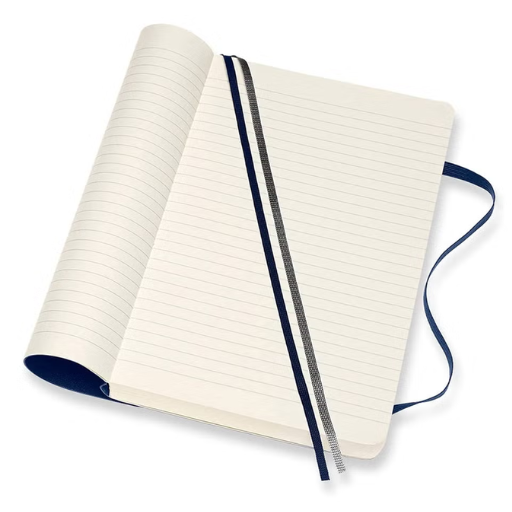
When choosing an everyday writing notebook, look for high-quality paper that prevents ink bleed-through and feathering, ensuring a smooth writing experience. Opt for a sturdy binding, like stitched or spiral, to keep your notes secure over time. Consider portability—select a size that fits your lifestyle, whether pocket-sized for easy travel or larger for extensive note-taking. Additionally, features like numbered pages, an index, or a built-in pocket can enhance organization and usability. Durable covers, whether hard or soft, protect your notes while reflecting your personal style.
Is a hardcover or softcover notebook better for daily use?
Both hardcover and softcover notebooks have their merits, and the better choice depends on your specific needs. Hardcover notebooks offer superior durability and protection, making them ideal for frequent handling or long-term use. They often lie flat, which enhances the writing experience. On the other hand, softcover notebooks are lightweight, flexible, and easier to carry, making them perfect for on-the-go use. If portability is a priority, a softcover notebook may be more convenient, but for a sturdier option that withstands wear and tear, a hardcover is a better choice. Ultimately, consider factors like your daily routine, usage frequency, and preferred writing environment to decide which suits you best.
What are the benefits of dot grid, lined, or blank pages?
Dot grid, lined, and blank pages each offer unique advantages depending on your needs. Dot grid pages provide the perfect balance of structure and flexibility, making them ideal for bullet journaling, sketching, and layout design. The subtle grid helps maintain alignment without being visually intrusive. Lined pages are best for writing-focused tasks like note-taking, journaling, or drafting, as they provide clear guidance for neatly organizing text. Blank pages, on the other hand, offer unrestricted creative freedom, catering to artists, designers, and anyone who prefers to work without constraints. By considering your specific purpose, you can select the page style that enhances your writing or creative process.
How important is paper thickness for everyday writing?
Paper thickness, or grammage, plays a key role in the quality of everyday writing. Thicker paper, often measured in GSM (grams per square meter), reduces the risk of ink bleeding through and provides a sturdy, professional feel, making it ideal for note-taking or formal writing. On the other hand, thinner paper is lightweight and more economical, suitable for daily use where durability is not a priority. Depending on your writing tool—whether a fountain pen, gel pen, or pencil—the thickness of the paper can significantly impact your writing experience. Choosing the right paper thickness ensures a smooth and satisfying result while preventing common issues like smudging, ghosting, or tearing.
Which notebooks are best for journaling and planning?
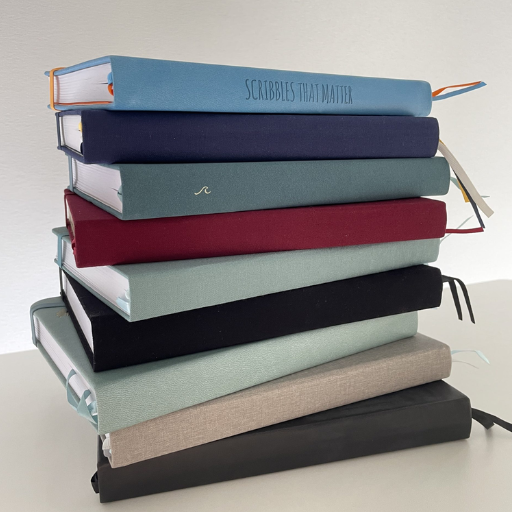
When it comes to journaling and planning, the best notebooks typically combine high-quality paper with a layout that suits your preferences. For journaling, dot grid or blank pages offer flexibility for creativity and free writing, while lined pages help maintain neatness and structure. Planners often benefit from pre-designed layouts, such as daily or weekly spreads, to organize tasks effectively. Notebooks like Leuchtturm1917, Moleskine, and Rhodia are popular options due to their durable bindings, smooth paper, and variety of formats tailored for personal or professional use. Choosing the right notebook ultimately depends on your style and needs, but quality and compatibility with your writing tools are key factors to consider.
What makes a notebook ideal for journaling?
An ideal notebook for journaling combines quality, functionality, and personalization. High-quality paper is essential to prevent ink bleed-through, especially for those using fountain pens or markers. Options like acid-free or heavyweight paper ensure longevity and preserve your notes over time. Functionality comes from features such as lay-flat bindings for ease of writing, numbered pages, and an index to stay organized. Personalization is equally important—choosing a notebook with a size, cover design, or specific layout that aligns with your journaling goals enhances the overall experience. Popular options like dot grid or blank pages are versatile for both writing and sketching. Ultimately, a good journal is one that inspires you to write consistently and adapt it to your journaling style.
Are there notebooks that combine planner and journal features?
Yes, there are notebooks that seamlessly combine planner and journal features. These hybrid notebooks typically include sections for goal setting, daily or weekly scheduling, habit tracking, and free-form journaling. Popular brands like Passion Planner, Panda Planner, and Clever Fox Planner offer customizable layouts that support productivity while allowing space for reflection and creativity. These tools are ideal for users who seek an all-in-one solution to organize their tasks, prioritize their goals, and record personal thoughts or achievements.
How do Midori MD notebooks compare to other journaling options?
Midori MD notebooks stand out from other journaling options due to their minimalist design, superior paper quality, and emphasis on the writing experience. Unlike planners or pre-structured journals, Midori MD notebooks provide a blank canvas, encouraging creativity and flexibility for users to personalize their journaling style. The paper is designed to work exceptionally well with a variety of writing tools, including fountain pens, preventing bleed-through and ensuring smooth writing. Additionally, the notebooks feature a lay-flat binding, making them comfortable for long writing sessions. While they lack features like pre-made templates found in planners, their simplicity appeals to users who value customization and premium craftsmanship. Midori MD notebooks are ideal for those who favor traditional, high-quality materials over structured organizational tools.
What are the most popular pocket-sized notebooks for on-the-go writing?
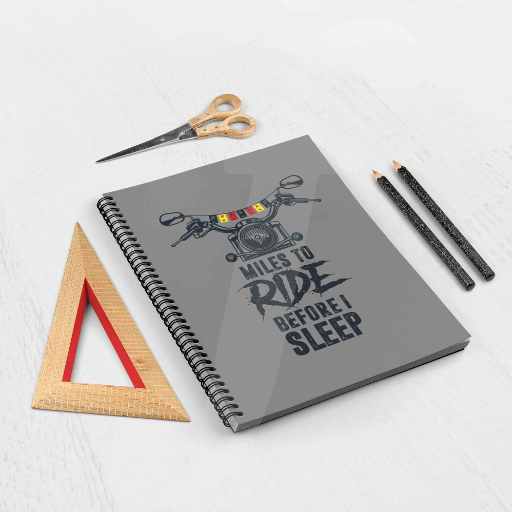
For writers and note-takers on the move, pocket-sized notebooks are a perfect companion. Some of the most popular options include the Field Notes brand, renowned for its durable and stylish designs, and the Rhodia Pocket Notebook, celebrated for its smooth quality paper and compact size. The Moleskine Pocket Notebook is another favorite, offering a timeless aesthetic and functionality with options like ruled, plain, or grid pages. Each of these notebooks combines portability with excellent craftsmanship, ensuring they fit seamlessly into your daily routine while accommodating quick thoughts or longer ideas on the fly.
How do Field Notes compare to other pocket notebooks?
Field Notes stand out among pocket notebooks for their rugged design, practical features, and emphasis on versatility. Unlike more refined options like Moleskine or Rhodia, Field Notes are designed with durability and functionality in mind, often using resilient covers and high-quality paper suited for a variety of writing tools, including pencils and pens. They are particularly popular for their themed, limited-edition releases, which add a unique and collectible aspect to the brand. While Field Notes notebooks may lack the polished aesthetic of Moleskine or the premium paper quality of Rhodia, they excel in delivering a balance of affordability, portability, and adaptability, making them ideal for everyday use or outdoor adventures.
What are the advantages of using a small notebook for quick notes?
Small notebooks offer several key advantages for quick note-taking. Their compact size ensures they are lightweight and easy to carry, fitting comfortably into pockets, bags, or even the palm of your hand. This portability makes them perfect for jotting down ideas, capturing reminders, or documenting observations on the go. Small notebooks encourage focus by limiting space, helping users distill thoughts to the essentials. Additionally, they require no charging or connectivity, providing reliable use in any environment, whether you’re indoors or out in nature. Their simplicity and practicality make them an invaluable tool for staying organized and creative in everyday life.
How do A5 notebooks compare to other sizes for various writing needs

A5 notebooks strike a balance between portability and practicality, making them ideal for a variety of writing tasks. Compared to larger options like A4, A5 notebooks are easier to carry and store, yet still provide ample space for detailed notes, sketches, or journaling. On the other hand, smaller sizes such as A6 are more compact but can feel restrictive for extensive writing or creative projects. This versatility makes A5 notebooks a popular choice for students, professionals, and creatives who value both convenience and functionality.
What are the benefits of A5 sized notebooks?
A5 sized notebooks strike the perfect balance between portability and functionality. Their medium size makes them easy to carry in a bag, yet they offer sufficient space for writing detailed notes, sketching ideas, or planning tasks. They are versatile tools, ideal for students jotting down lecture points, professionals managing meetings, or creatives capturing spontaneous thoughts. Additionally, the standardized size allows for seamless organization and storage, fitting neatly on bookshelves or in filing systems. Their popularity also means a wide variety of designs, materials, and layouts are available, catering to diverse preferences and needs.
How do A5 notebooks compare to B5 and A4 sizes?
A5 notebooks are smaller and more portable compared to B5 and A4 sizes. Measuring 5.8 x 8.3 inches, A5 is compact and easy to carry, making it ideal for personal use, daily notes, or journaling. B5 notebooks, slightly larger at 6.9 x 9.8 inches, strike a balance between portability and writing space, making them popular for academic or professional use. Meanwhile, A4 notebooks, measuring 8.3 x 11.7 inches, offer the largest writing area, perfect for detailed work, extensive note-taking, or presentations. While A5 is favored for convenience, the choice between sizes often depends on the specific needs for space, portability, and purpose.
What are the best spiral notebooks for students and professionals?
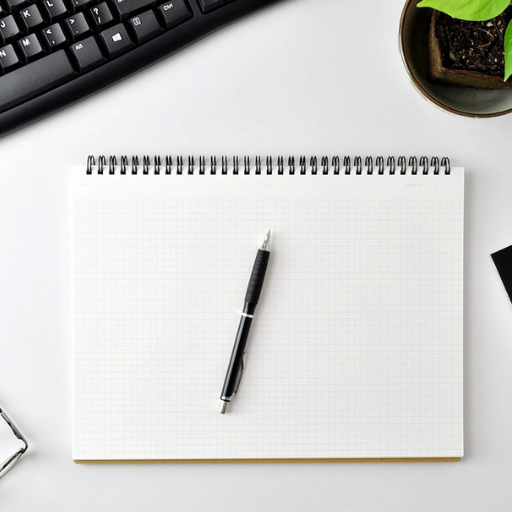
For students, the best spiral notebooks are those that combine durability, affordability, and functionality. Options like Five Star notebooks stand out with their water-resistant covers, built-in storage pockets, and sturdy spiral binding, ensuring they can endure daily use.
Professionals often prefer spiral notebooks with a more polished look and premium features. Brands like Rhodia and Moleskine offer high-quality paper, sleek designs, and perforated pages for easy sharing or filing, making them ideal for meetings and presentations. Both groups benefit from selecting notebooks tailored to their specific needs, whether it’s for note-taking, organizing ideas, or managing detailed projects.
Which spiral notebooks offer the smoothest writing experience?
When considering spiral notebooks that offer the smoothest writing experience, three brands frequently lead the conversation. Rhodia notebooks stand out for their ultra-smooth, high-quality ivory Clairefontaine paper, which resists ink bleed and feathering, making them a favorite for pen enthusiasts. Another excellent option is Moleskine, known for its premium paper quality and compatibility with various writing tools, including fountain pens and gel pens. Lastly, the Leuchtturm1917 spiral notebooks impress with their silky-smooth texture and ink-friendly pages, providing a seamless experience for meticulous writers. These notebooks combine functionality with superior paper quality, delivering an exceptional writing experience.
Are there spiral notebooks suitable for fountain pens?
Yes, there are spiral notebooks that perform exceptionally well with fountain pens. Rhodia spiral notebooks feature premium Clairefontaine paper, which boasts remarkable resistance to ink bleed-through and feathering. Another excellent choice is the Kokuyo Campus notebooks, valued for their smooth, high-quality paper designed to handle fountain pen ink effortlessly. Additionally, the Maruman Mnemosyne series offers durable spiral binding and fountain pen-friendly paper, ensuring a superior writing experience. These notebooks combine functionality and compatibility, making them perfect for fountain pen users.
How do premium stationery brands like Rhodia and Clairefontaine measure up?
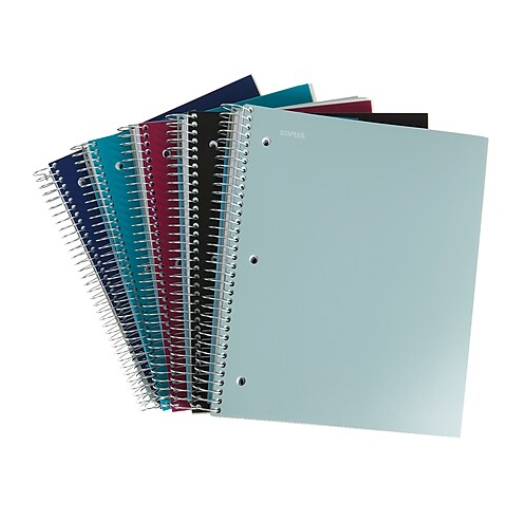
Premium stationery brands like Rhodia and Clairefontaine consistently stand out due to their exceptional paper quality. Rhodia is renowned for its durability and ultra-smooth Clairefontaine paper, designed to prevent ink bleed-through and feathering, making it a favorite among fountain pen enthusiasts. Clairefontaine, on the other hand, is celebrated for its luxurious feel and exceptional ink absorption, ideal for both writing and artwork. Both brands embody excellence in craftsmanship, ensuring a reliable and enjoyable writing experience for users who value high-quality materials.
What makes Rhodia notebooks popular among writers?
Rhodia notebooks are popular among writers for their impeccable paper quality, sleek design, and practicality. The thick, smooth paper resists ink bleed-through and feathering, providing a flawless writing experience, especially for fountain pen users. Their iconic grid patterns, alongside options for lined, blank, or dot-grid formats, cater to a variety of writing preferences, from note-taking to creative journaling. Additionally, their durable covers and spiral or staple-bound designs ensure long-lasting use, while the portability of Rhodia notebooks makes them ideal for writers on the go. This blend of quality and functionality has solidified Rhodia’s reputation as an essential tool for professional and casual writers alike.
How do Clairefontaine notebooks perform with different pen types?
Clairefontaine notebooks are highly regarded for their exceptional paper quality, making them compatible with a wide range of pen types. The 90gsm acid-free paper is ultra-smooth, allowing fountain pens to glide effortlessly without any bleeding or feathering, even with broader nibs or wet inks. Gel pens, ballpoint pens, and rollerball pens also perform seamlessly, providing crisp, clean lines with minimal smudging. For artists or calligraphers using brush pens and felt-tip markers, the paper ensures controlled ink absorption, preserving vibrant colors and fine details. This adaptability makes Clairefontaine notebooks a versatile choice for writers, students, and creatives alike.
Are premium notebooks worth the investment for everyday writing?
Premium notebooks can be a worthwhile investment for those who value durability, superior paper quality, and an enhanced writing experience. The high-grade materials used in these notebooks minimize issues like ink bleeding, ghosting, or smudging, making them ideal for fountain pen users and other writing tools. Additionally, their sturdier covers and well-bound pages ensure long-term use without wear and tear. While they come at a higher price point, premium notebooks often last longer and provide consistency and satisfaction that cheaper alternatives may lack. For frequent writers, students, or professionals, the elevated performance and reliability can justify the cost.
References
Frequently Asked Questions (FAQ)
Q: What makes a notebook fountain pen friendly?
A: A fountain pen friendly notebook typically features thicker paper, often with a higher GSM paper weight, to prevent ink from bleeding or feathering. The paper is designed to handle the wetness of fountain pen ink, offering a smooth writing experience.
Q: Are hardcover notebooks better for journaling?
A: Hardcover notebooks provide durability and support, making them an excellent choice for journaling. They protect the pages and offer a stable surface for writing, which is beneficial for a daily journaling routine.
Q: What types of notebooks and notepads are best for fountain pen users?
A: The best fountain pen friendly notebooks often include options like Maruman Mnemosyne notebooks and Maruman spiral note basic, which are known for their high-quality, thick paper that prevents ink bleed-through.
Q: How does a leather cover affect a notebook’s usability?
A: A leather cover adds elegance and durability to a notebook. It protects the pages from damage and gives the notebook a premium feel, which can enhance the overall writing experience.
Q: Why is higher paper weight important in a notebook for fountain pen use?
A: Higher paper weight, such as 90 GSM or more, is important because it prevents ink from bleeding through the page. This ensures that the writing appears crisp and clear, even with heavy ink flow from a fountain pen nib.
Q: Can I use a writing pad for fountain pen writing?
A: Yes, a writing pad with fountain pen friendly paper can be a great choice. Look for options with thick paper and a smooth surface to ensure the best writing experience with a fountain pen.
Q: What is the benefit of using ring-bound notebooks for note-taking?
A: Ring-bound notebooks allow pages to lay flat, providing a comfortable writing surface. They also make it easy to remove or rearrange pages, which is useful for organizing notes or projects.
Q: Are there specific notepads recommended for everyday writing?
A: Notepads with cardstock covers and high-quality paper, such as Field Notes memo books, offer durability and a pleasant writing experience, making them ideal for everyday use.
Q: What features should I look for in a notebook for journaling with a fountain pen?
A: Look for a notebook with fountain pen friendly paper, a sturdy cover, and a size that suits your journaling needs. Thread-bound notebooks or those with a leather cover are often preferred for their durability and aesthetic appeal.







